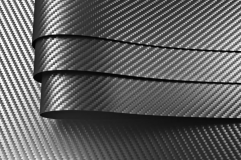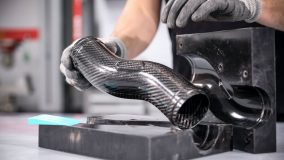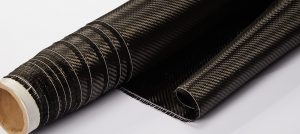Carbon fiber is a game-changer in modern manufacturing. It is lightweight, strong, and resistant to heat and corrosion. Many industries, including aerospace, automotive, and sports, use carbon fiber parts to improve performance and durability. But how are these parts made? We’ll explain why carbon fiber is and how it’s manufactured.
What is Carbon Fiber, and Why is it Used in Manufacturing?
Carbon fiber is a fabric made from skinny strands of carbon atoms. These strands are woven collectively to shape a strong fabric, then lined in resin to create a solid shape. The give-up result is the lightweight carbon components but relatively strong fabric. Manufacturers opt for carbon fiber composites because they are much more potent than metal but weigh much less. It is also proof against corrosion, no longer grows in heat and can be moulded into complex shapes. This makes it ideal for high- performance packages like aircraft, race vehicles, and scientific devices.
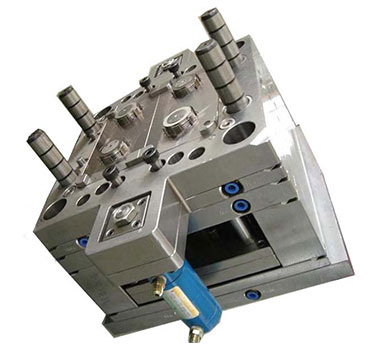
Main Methods for Manufacturing Carbon Fiber Parts
There are numerous specific strategies used to manufacture carbon fiber additives.
Each method offers unique benefits depending on the type of part being made, the required strength, and the level of detail involved. Hand lay-up molding is one of the only and most common techniques. It entails manually layering sheets of carbon fiber material over a mold and coating them with resin. The layers are pressed together by hand and then left for treatment. This technique is fantastic and desirable for custom and occasional-volume elements.
Resin Transfer molding (RTM) is an extensively used method. In RTM, high-performance carbon fiber material is in a closed mould, and resin is injected underneath pressure to ensure even distribution. The issue is then heated and cured to acquire its final form. This method is proper for medium-amount manufacturing and offers excellent precision.
Compression molding is a technique used for mass production. In this technique, carbon fiber sheets are in a mould, and high pressure and warmth are carried out to form the final shape. This method guarantees uniformity and electricity simultaneously by decreasing manufacturing time.
Filament winding is a specialised method for manufacturing cylindrical additives like tubes and pipes. Carbon fiber strands are wrapped spherically in a rotating mould and covered with resin. The component is then cured to harden, producing an exceptionally durable and lightweight product.
How to Manufacture Carbon Fiber Parts?
The carbon fiber manufacturing process includes numerous steps to ensure outstanding excellence and strength.
Designing the Part
First, engineers create a layout using computer-aided format (CAD) software. This step guarantees that the part meets the specified energy, weight, and form specifications.
Creating the Mold
A mould is made primarily based on the layout. Molds can be crafted from aluminium, steel, or fibreglass. The mold determines the very last form of the carbon fiber issue.
Laying the Carbon Fiber
Sheets of carbon fiber fabric are cut to suit the mould’s form. These sheets are then layered onto the mould, following a pattern to maximise energy.
Applying Resin
Resin is implemented in the carbon fiber layers. This resin lets in to bond the fibers collectively and offers the last detail of its anxiety.
Curing the Part
The component is then placed in an oven or autoclave, where the resin is heated to a high temperature and strain-hardened. This step is critical for achieving high electricity and durability.
Finishing and Inspection
Once cured, the element is removed from the mould. It is then trimmed, sanded, and polished to remove excess cloth. Quality exams are completed to ensure there are no defects.
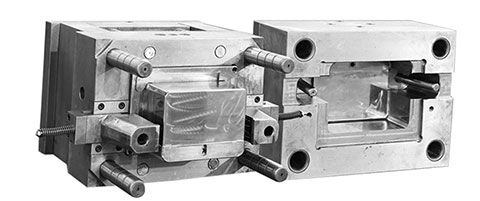
Is Carbon Fiber More Expensive Than Other Materials?
Carbon fiber is more expensive than metal and aluminum because of its complicated manufacturing method. Manufacturing carbon fiber requires superb raw materials, specialised tools, and skilled, challenging work. Weaving carbon strands, using resin, and curing the part is time-eating and calls for precision.
Although carbon fiber is pricey, its advantages often outweigh the rate. Its mild-weight nature enhances fuel efficiency in the automobile and aerospace industries. Its excessive energy and resistance to position make it a cost-effective preference for long-time-period packages. Despite the initial funding, many industries select carbon fiber because it offers superior ordinary performance and durability as compared to standard materials.
What Industries Use Carbon Fiber Parts the Most?
Carbon fiber is extensively utilised in many industries because of its specific homes. Some of the maximum standard packages consist of:
- Aerospace: Aerospace carbon fiber applications and spacecraft use carbon fiber to lessen weight while preserving electricity. This allows beautiful gas performance and overall performance.
- Automotive: Carbon fiber is used for body panels, spoilers, and inside parts in sports vehicles and high-execution autos. Lighter vehicles speed up quicker and consume less gas.
- Sports Equipment: Carbon fiber is used in bikes, tennis rackets, golf carts, and helmets. Athletes opt for carbon fiber gear because its mist is extremely but lightweight.
- Medical Devices: Carbon fiber is used in prosthetics, surgical, and clinical imaging. It is long-lasting, lightweight, and no longer intrudes with X-rays or MRIs.
- Industrial Applications: Carbon fiber is used in factories for system parts, robot palms, and safety systems. Its resistance to chemical substances and heat makes it perfect for harsh environments.
Carbon Fiber Molding Service – Best Carbon Fiber Parts Manufacturing
Many companies provide custom carbon fiber fabrication molding offerings. However, deciding on the proper producer is crucial for achieving significant results. “EX MOULD CO.” is one of China’s leading carbon fiber element producers. They are recognised for generating parts of durable carbon fiber materials for numerous industries. Their manufacturing gadget comprises the superior era and strict extraordinary control measures to ensure each component meets the best necessities. With years of revel in and know-how, “EX MOULD CO.” can offer sturdy, lightweight, and dependable carbon fiber parts tailored to purchaser requirements.
